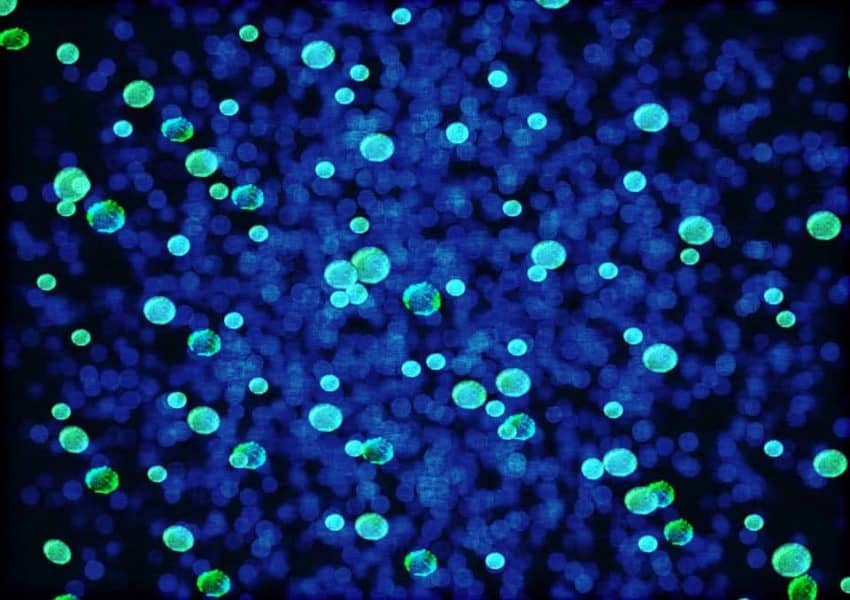The vaginal microbiome is believed to protect women against Chlamydia trachomatis, the etiological agent of the most prevalent sexually transmitted infections (STIs) in developed countries. New research by the University of Maryland School of Medicine (UMSOM) shows how the microbiome can either protect or make a woman more susceptible to these serious infections.
The research is important amid a rising number of cases of chlamydia worldwide. In the United States alone, 1.7 million cases of chlamydia were reported in 2017, a 22 percent increase since 2013, according to data from the Centers for Disease Control and Prevention.
“Chlamydia is a major growing health issue in the U.S., and more work is needed to understand why some women are apparently naturally protected while other are not,” commented Jacques Ravel, PhD, professor of microbiology and immunology, associate director and senior scientist at the Institute for Genome Sciences (IGS) at UMSOM. “Our novel research aims to decipher the mechanistic and functional underpinnings of communication between the host and the cervicovaginal microbiome to better understand resistance and susceptibility to this infection.”
Ravel is a co-principal investigator for this research, along with Patrik Bavoil, PhD, professor and chair of the Department of Microbial Pathogenesis at the University of Maryland School of Dentistry (UMSOD). The investigators also collaborated with Larry J. Forney, PhD, university distinguished professor in the Department of Biological Sciences at the University of Idaho.
While Lactobacillus-dominated microbiota in a woman’s vagina has long been suspected to provide a protective barrier against STIs like chlamydia, investigators at IGS and UMSOD are reporting for the first time a mechanism enabling specific types of cervicovaginal microbiome to predispose cells in the vagina and cervix to resist chlamydial infection.
“We will now be able to leverage these microbiomes to identify women at risk of infections, but more importantly to develop improved strategies to restore an optimal protection when it is lacking. Unlike our genes, the vaginal microbiome can be modulated to increase protection against chlamydia, but also against other sexually transmitted infections, including HIV,” said Ravel of the research, which was published Aug. 13 in mBio, “Cervicovaginal Microbiota-Host Interaction Modulates Chlamydia trachomatis Infection.”
The investigators have shown previously that five major types of vaginal microbiome exist, four of which are dominated by a different species of Lactobacillus, while the fifth has very low numbers of Lactobacillus bacteria and is associated with an increased risk of adverse outcomes including STIs, such as HIV, and even premature births.
The current research showed that Lactobacillus iners, a bacterium actually commonly found in the vagina did not optimally protect human cells against chlamydial infection, while products of Lactobacillus crispatus, another Lactobacillus species frequently found in the vagina, did.
Previously published research has hinted at L. iners being a risk factor for STI; however, the mechanism by which these bacteria were specifically suboptimal at protecting women against STI has remained elusive. Like other Lactobacillus, L. iners produces lactic acid, but only the L isoform. The researchers found that D-lactic acid, not L-lactic acid, down-regulates cell cycling through epigenetic modifications thus blocking C. trachomatis entry into the cell, one of the pathogen key infectious process, among other processes.
Thus, a rather unexpected result of this study is that the vaginal microbiome does not affect the pathogen per se, but drives susceptibility or resistance to infection, by modifying the cells that line up the cervicovaginal epithelium. The researchers further demonstrated that exposure to optimal vaginal microbiota provided long term protection, which has major implication on how a woman is protected. These mechanisms are now being exploited to develop strategies to optimize protection against C. trachomatis infections but also other STIs.
“Chlamydia is reputed to be a most difficult microorganism to study. By hiding inside cells, the pathogen routinely avoids antimicrobial host defenses. By causing mostly asymptomatic infection, it often escapes detection by both the infected host and the physician alike,” said Bavoil. “What we have done in this study through several years of hard work by dedicated researchers is to provide, for the first time, a huge, new stepping stone on which future translational research to exploit the microbiome in the fight against chlamydial infection and disease, can be based.”
Bavoil, a well-known expert in C. trachomatis biology and pathogenesis, is a co-principal investigator with Ravel on the NIH funding that supported this study.
The research was supported by the National Institute for Allergy and Infectious Diseasesof the National Institutes of Health under award numbers U19A1084044 and UH2A1083264.
“This groundbreaking research will stimulate the development of novel antibiotic sparing solution to modulate the cervicovaginal microbiota to protect women from STI, but also from adverse reproductive outcomes such as preterm birth,” said UMSOM Dean E. Albert Reece, MD, PhD, MBA, who is also the executive vice president for medical affairs, University of Maryland, Baltimore, and the John Z. and Akiko K. Bowers Distinguished Professor at UMSOM.

